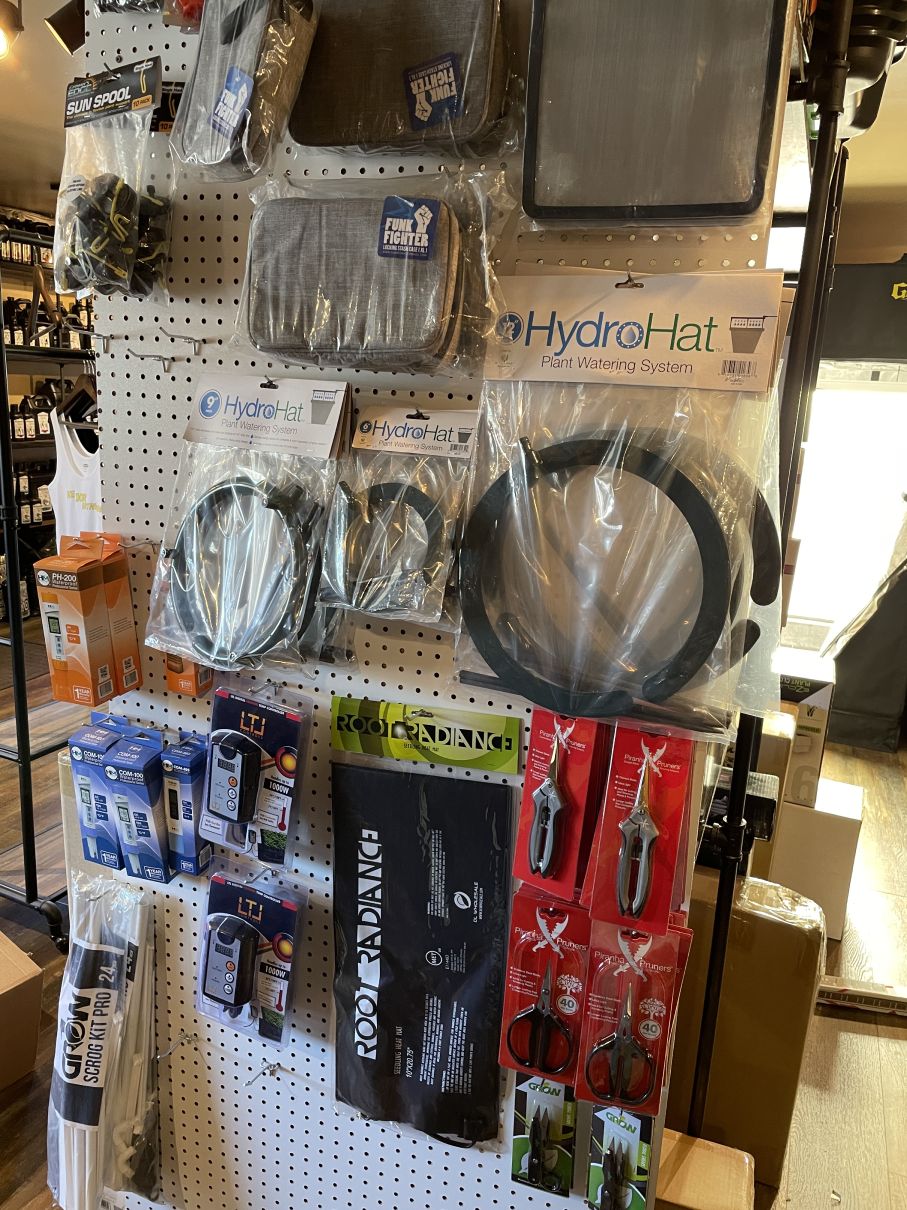Master the Art of Growing with The Indoor Earthworm's Know-how
Master the Art of Growing with The Indoor Earthworm's Know-how
Blog Article
Utilizing the Power of Hydroponics: a Deep Dive Into Makes Use Of and Different Types
In the realm of modern-day agriculture, hydroponics has emerged as a technique that tests traditional farming practices by using a space-saving and water-efficient alternative. The use of hydroponic systems opens a globe of opportunities for growing plants in varied atmospheres, inevitably affecting food production and sustainability. As we browse through the complex landscape of hydroponics, discovering its different types and applications, a deeper understanding of its potential to revolutionize farming practices and address global food safety concerns starts to unravel.
Advantages of Hydroponic Farming
Hydroponic farming provides numerous benefits over conventional soil-based agriculture. One of the key advantages is water efficiency; hydroponic systems make use of up to 90% much less water compared to standard farming techniques.
Moreover, hydroponic farming enables better control over nutrient levels, bring about faster plant development and higher returns. By providing essential nutrients straight to the plant origins, hydroponic systems promote healthier and a lot more robust plant growth. Additionally, the regulated environment of hydroponic systems decreases the danger of parasites and illness, minimizing the need for dangerous pesticides and herbicides.

Common Kinds of Hydroponic Systems
Given the countless benefits of hydroponic farming, it is vital to check out the different common kinds of hydroponic systems used in contemporary farming. One prevalent kind is the Deep Water Society (DWC) system, where plant origins are submerged in a nutrient option. Another usual system is Nutrient Film Strategy (NFT), which involves a slim movie of nutrient-rich water streaming over the origins - The Indoor Earthworm. The Ebb and Flow system, also called Flood and Drainpipe, regularly floodings the plant roots with nutrient remedy before draining it. Aeroponics attracts attention for its technique of putting on hold plant roots in the air and misting them with a nutrient remedy. Leak systems supply a regulated quantity of nutrient remedy directly to the plant's base. Wick systems, the most basic form of hydroponics, utilize a wick to passively supply vitamins and mineral service to the plant origins. Each of these systems uses unique benefits and provides to different plant kinds and growth phases in hydroponic farming.
Nutrient Film Strategy (NFT) System

Among the crucial advantages of the NFT system is its water effectiveness. The Indoor Earthworm. Because the nutrient remedy is recirculated in a closed system, this technique uses dramatically less water contrasted to traditional dirt farming. In addition, the NFT system is space-efficient, making it optimal for interior farming or in areas with restricted room for conventional farming
However, the NFT system requires cautious surveillance and maintenance to make sure the continual flow of water and nutrients. Any type of disturbance in the circulation can quickly affect plant health and wellness. Generally, the NFT system uses a lasting and effective means to expand plants hydroponically, particularly for plants that grow in well-oxygenated origin environments.
Deep Water Culture (DWC) System
Relocating from the Nutrient Movie Method (NFT) system, the Deep Water Culture (DWC) system is a hydroponic technique that includes putting on hold plant origins straight in a nutrient remedy. Unlike NFT, where origins are continually revealed to a slim movie of nutrient remedy, DWC plants have their origins submerged in a tank filled up with aerated nutrition water. why not look here The roots dangle in the nutrient service, permitting direct uptake of water and necessary nutrients.
One of the vital advantages of the DWC system is its simplicity and reduced maintenance needs. DWC systems need adequate oygenation to avoid origin rot and make sure optimal nutrient absorption.
Aeroponic System
A cutting-edge method in hydroponics farming, the Aeroponic System uses a misting or misting system to provide nutrients directly to plant roots put on hold in the air. This system is recognized for its ability to advertise rapid development and efficient nutrient uptake because of the straight shipment of nutrients to the origins, allowing the plant to concentrate its energy on development as opposed to browsing for nutrients. In an aeroponic arrangement, plants are commonly housed in a closed atmosphere where the origins are intermittently misted with a nutrient remedy. This misting cycle ensures that the roots obtain ample oxygen, advertising healthy root growth and total plant growth.
One of the essential advantages of aeroponics visit their website is its water performance, as the system makes use of significantly much less water compared to traditional soil-based growing approaches. Furthermore, the specific shipment of nutrients straight to the origins can cause greater returns and faster growth prices. While aeroponics can be a lot more intricate to establish up and preserve compared to various other hydroponic systems, its possibility for enhanced plant growth and efficiency makes it a preferred option for hydroponic lovers and business growers looking for optimum outcomes.
Conclusion
Finally, hydroponic farming supplies various benefits and different types of systems to select from. The Nutrient Film Method (NFT) system, Deep Water Culture (DWC) system, and Aeroponic system are among one of the most usual techniques utilized in hydroponics. Each system has its very own advantages and limitations, making it important for farmers to meticulously consider their requirements and choices before picking one of the most suitable Full Report system for their plants.
Unlike other hydroponic systems where plants are submerged in a nutrient remedy, in the NFT system, the origins are exposed to the water only in a shallow film.Relocating from the Nutrient Film Strategy (NFT) system, the Deep Water Culture (DWC) system is a hydroponic technique that entails suspending plant origins directly in a nutrient solution.An ingenious approach in hydroponics farming, the Aeroponic System uses a misting or misting system to provide nutrients directly to plant origins suspended in the air. The Nutrient Film Strategy (NFT) system, Deep Water Culture (DWC) system, and Aeroponic system are amongst the most common techniques utilized in hydroponics. Each system has its very own benefits and constraints, making it essential for farmers to meticulously consider their needs and preferences before picking the most suitable system for their crops.
Report this page